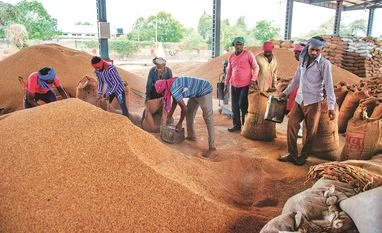The manifesto of the Bharatiya Janata Party (BJP) for the 2024 general elections is committed to supporting farmers and enhancing India’s self-reliance in producing key pulses, including tur, urad, masoor, moong, and chana, and four oilseeds, namely mustard, soybean, sesame seeds, and groundnut.
In its 2019 manifesto, the party had promised to launch a mission to achieve self-sufficiency in oilseeds and other agricultural products.
As the party sets out on its campaign trail once again, it would be interesting to analyse the changes in the Indian pulses and oilseeds sector since the last manifesto and how farmers have been impacted by these policies.
The data shows when it comes to improving area, production, and yield, there has been significant progress between 2018-19 and 2022-23 for pulses and oilseeds. But, it has not exactly come at the expense of cereals, which too have shown good growth during this five-year period.
Also, the import of edible oil has climbed during the same period but that of pulses has slumped.
However, things are changing.
More From This Section
According to trade estimates, in 2023-24, India is projected to import almost 3 million tonnes of pulses, which will be the highest in six years.
In the case of edible oil in the 2022-23 marketing year (November-October), the country had imported a record 16.44 million tonnes, valued at more than Rs 1.38 trillion. A year before that, the import was 14.03 million tonnes, valued at nearly Rs 1.57 trillion.
Hits and misses
In a nutshell it can be said that between the two manifestos released by the BJP in 2019 and 2024, the country has made significant progress in boosting the production and yield of pulses and oilseeds, but it is far from gaining self-sufficiency in either.
So, what has kept the goal of self-sufficiency in pulses and oilseeds aloof for Indian consumers and markets?
The reasons are many: Low yield, an absence of regular irrigation, and fluctuating prices.
Most importantly, for an average Indian farmer, the returns on many of the oilseeds and pulses are just not commensurate when compared to cereals.
The data from the Commission for Agricultural Costs and Prices (CACP) shows in the triennium ended 2021-22, gross return over the cost of production for paddy and wheat (A2+FL, or the cost of production plus family labour) is significantly higher than that for most of the competing pulses and oilseeds in the kharif and rabi seasons.
A triennium is a period of three years (2019-20 to 2021-22 in this case).
A2+FL is the benchmark cost used by the government to determine the minimum support price.
For example, in the case of paddy, the main cereal grown in the kharif season, the average gross return over the cost of cultivation in the triennium ended 2021-22 was 42.1 per cent while that for moong was 25.3 per cent and urad 27.1 per cent.
Returns from cultivation
In oilseeds, the gross return over cultivation cost for groundnut in the triennium 2021-22 was 34.8 per cent, soybean 28.9 per cent, and sunflower 39.9 per cent.
Only, arhar gave a return, at 56.7 per cent, which was better than paddy’s during this period.
In the rabi season, average gross return over the A2+FL cost of cultivation in the triennium ended 2021-22 for wheat was 107 per cent, while in the same season the return for gram was 70.5 per cent, for lentil 105.6 per cent and safflower -11.7 per cent.
Only, mustard gave a return that was better than that for wheat in the triennium ended 2021-22 during the rabi season at 125.6 per cent.
Unless farmers are ensured that the pulses and oilseeds they grow will fetch them a return higher than that for cereals, making them shift and move towards self-sufficiency will remain a tall order.
It is here perhaps the government needs to focus on to realise the promise of self-sufficiency -- a targeted approach to make pulses and oilseeds cultivation remunerative for growers on a par with cereals.
Some reports said that efforts had started in this direction with the government launching an initiative for assured purchases of oilseeds and pulses in a few states. How far and how much these will help in boosting returns only time will tell.
)